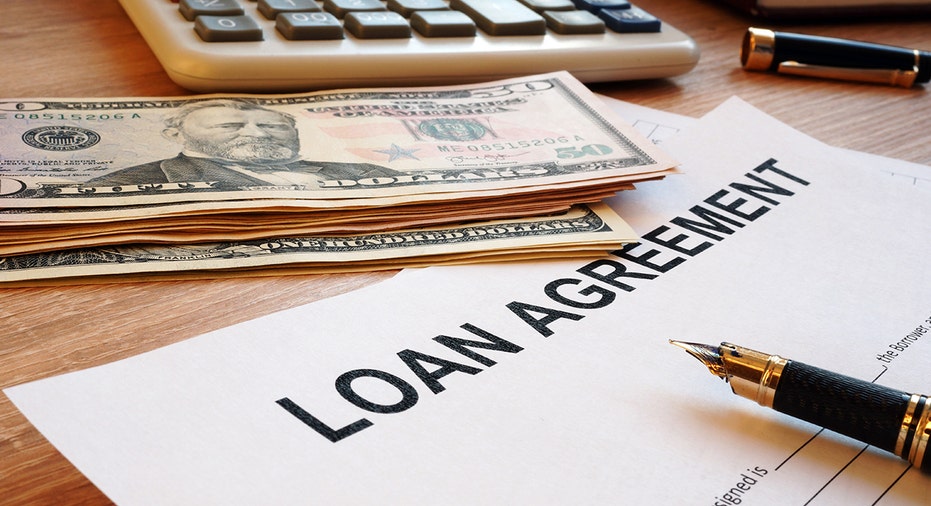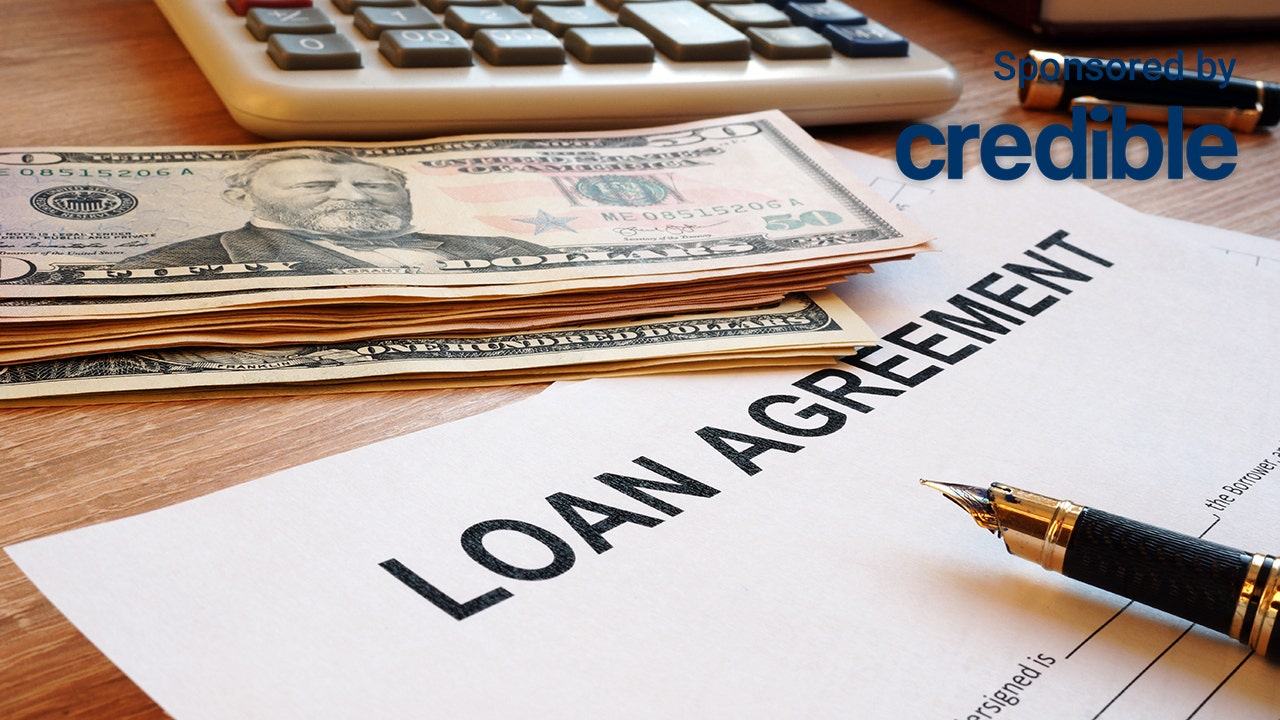Our goal here at Credible Operations, Inc., NMLS Number 1681276, referred to as “Credible” below, is to give you the tools and confidence you need to improve your finances. Although we do promote products from our partner lenders who compensate us for our services, all opinions are our own.

Long-term personal loans offer longer repayment periods, sometimes up to seven years. But interest can add up. (iStock)
Personal loans typically have repayment terms of one to five years. But if you need the lowest possible monthly payment, or as much time as possible to repay a personal loan, you may look for one that’s longer than usual.
It’s important to understand how a longer repayment term will affect the overall cost of a personal loan. Here’s a look at how long-term personal loans work, where to find one and what to know about the pros and cons of loans with longer repayment terms.
What’s a long-term personal loan?
While many lenders offer loans up to 60 months (five years), some offer loans with terms up to 84 months (seven years). Generally, long-term loans work the same as short-term loans. You’ll repay the loan in monthly installments on a set repayment schedule. But long-term loans usually have a lower monthly payment amount.
But while having more time to repay a loan may sound like a good idea, there are caveats. Long-term personal loans typically have higher interest rates than shorter-term loans, although if you have excellent credit you may be able to get a lower interest rate. And, because you’re stretching the time you take to pay back the loan, you’ll also pay more in interest.
Where can I get a long-term personal loan?
Personal loans with longer terms are typically harder to find, but lenders may offer them for certain uses, such as funding home repairs or paying off medical bills. Some banks, credit unions and online lenders offer long-term loans, but not all do.
- Banks may offer longer terms to existing customers in good standing. They may also offer lower rates on long-term loans.
- Credit unions are member-owned, so you’ll have to be a member to get a personal loan from a credit union. It may be difficult to find a credit union that gives longer-term loans. Those that do make long-term loans may limit what you can use them for — such as for home improvement.
- Online lenders offer a convenient and practical way to find long-term personal loans. But only a handful of online lenders actually offer longer-term loans. And they may require you to have good to excellent credit to qualify for a long-term loan.
Credible makes it easy to compare personal loan rates from multiple lenders.
Long-term personal loan lenders to consider
Some of the best lenders for long-term loans are Credible partners. But it’s important to compare lenders so you find the best choice for your needs.
Discover
- Loan amounts: $2,500 to $35,000
- Loan terms: Three to seven years
- Minimum credit score: 660
LightStream
- Loan amounts: $5,000 to $100,000
- Loan terms: Two to seven years (up to 12 years for home improvement loans)
- Minimum credit score: 660
Marcus
- Loan amounts: $3,500 to $40,000
- Loan terms: Two to seven years (up to 12 years for home improvement loans)
- Minimum credit score: 660 (TransUnion FICO® Score 9)
SoFi
- Loan amounts: $5,000 to $100,000
- Loan terms: Two to seven years
- Minimum credit score: Does not disclose
How can I get a long-term personal loan?
Each lender has eligibility criteria you must meet to qualify for your long-term loan. Most require good to excellent credit, so working to improve your credit score, offering collateral or getting a cosigner can help if your credit doesn’t meet the lender’s minimum requirements. Here are some things you can do to improve your chances of qualifying for a personal loan.
- Improve your credit. Lenders consider your credit score first when extending credit, determining your APR or qualifying you for a long-term loan. Factors like your credit payment history, credit mix, new credit applications, your credit utilization ratio and total debt also matter.
- Pay down other debt. When determining your eligibility for a long-term loan, lenders look at factors like repayment history and all outstanding debts. They use this information to assess the risk of lending to you. Paying down your current debt and paying your credit card, car, mortgage and all other bills on time can make it easier to qualify for your loan without offering collateral.
- Improve your debt-to-income ratio. Your debt-to-income ratio (DTI) helps determine how much you qualify to borrow. Lenders look at your DTI to decide if you can take on more debt and make another monthly payment.
To improve your DTI, pay down or pay off your existing debt (if possible) and don’t take on any new debt. You might also consider reducing your spending by purchasing only what you need.
- Increase your income. Lenders also look at your employment history and income when deciding to offer (or not offer) a long-term loan. You may be in a better position if you can increase your income. If you get alimony or child support, your lender may count that as income. It’s worth checking out. You could also get a side hustle or take on a part-time job for a season.
- Get a cosigner. If your credit or income doesn’t meet a lender’s requirements, or you have no long-standing relationship with a local bank, you might want to consider using a cosigner. Your cosigner will be asked to meet your lender’s requirements, and if you fail to make your payments, your cosigner becomes responsible for the loan.
- Offer collateral. Personal loans are usually unsecured, meaning you need no collateral to qualify. However, some lenders may offer higher amounts and longer terms if you secure your loan with assets as collateral.
Pros and cons of long-term personal loans
As with any financial product, long-term personal loans have advantages and disadvantages.
Pros of long-term personal loans
- Get lower monthly payments when compared to a short-term loan.
- A longer-term loan might help you finance a large purchase or pay off a major expense.
- You might qualify for a better rate than with a credit card.
- Loans are usually for much higher amounts.
- Long-term loans are flexible to fund most anything.
Cons of long-term personal loans
- Interest rates may be higher on long-term loans.
- You may face fees such as an origination fee or prepayment penalties.
- Interest adds up over the term of your loan.
- Not every lender offers long-term loans.
- It can be challenging to qualify.
When should I get a long-term personal loan?
Suppose you want to make a large purchase or need a substantial amount of money to fund home improvements or pay off medical bills. In that case, repaying the loan over a longer period of time generally means you’ll have lower monthly payments, which may be easier to manage.
However, because the payoff period is longer, you will accrue more interest than with a short-term loan. A personal loan calculator can help you get a better idea of the costs associated with a long-term personal loan.
When should I avoid a long-term personal loan?
Aside from the fact that a long-term loan provides an extended repayment period, some lenders have minimum borrowing amounts for long-term loans. While that may be tempting, if you don’t have the regular income to make the payments, you risk defaulting on your loan. That can damage your credit for years. Remember, it’s much easier to destroy your credit than repair it.
You can learn more about personal loans and compare rates and repayment terms from multiple lenders using Credible.
Alternatives to long-term personal loans
If you need to borrow a large amount of money or require a longer repayment term, take a look at these alternatives to a long-term loan.
- 0{797b2db22838fb4c5c6528cb4bf0d5060811ff68c73c9b00453f5f3f4ad9306b} APR credit card — If you can qualify for one, a 0{797b2db22838fb4c5c6528cb4bf0d5060811ff68c73c9b00453f5f3f4ad9306b} credit card waives interest during a set promotional period. As long as you pay it off before the promotion ends, you’ll avoid interest charges. But, if you don’t pay off the balance before the end of the introductory period, you could be looking at high interest on the remaining balance.
- Home equity loan — Home equity loans come with a fixed interest rate and monthly payments, which won’t change over the term of the loan. The amount you can borrow depends on the equity you have in your home. However, your home equity loan payment is added to your mortgage payment, making your monthly payments much higher. Plus, if you default on the loan, your home is at risk.
- HELOC — A home equity line of credit (HELOC) is similar to a home equity loan, as you borrow against the equity in your home. It’s also a lot like a credit card, where you only borrow what you need, and the interest is compounded on the amount you borrow. However, like a credit card, you may be tempted to overborrow, and if interest rates rise, so does your payment. Plus, a HELOC could put your home at risk if you fail to repay the line of credit.
- Cash-out refinancing — Like a home equity loan and HELOC, a cash-out refinance taps into the equity in your home. You can usually get a significant amount of money at low interest rates and longer repayment periods, but if you can’t make your payments and repay your loan, you could lose your home to foreclosure.
Credible makes it easy to see your prequalified personal loan rates in just minutes.



